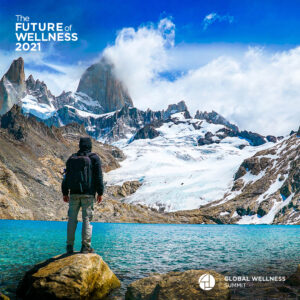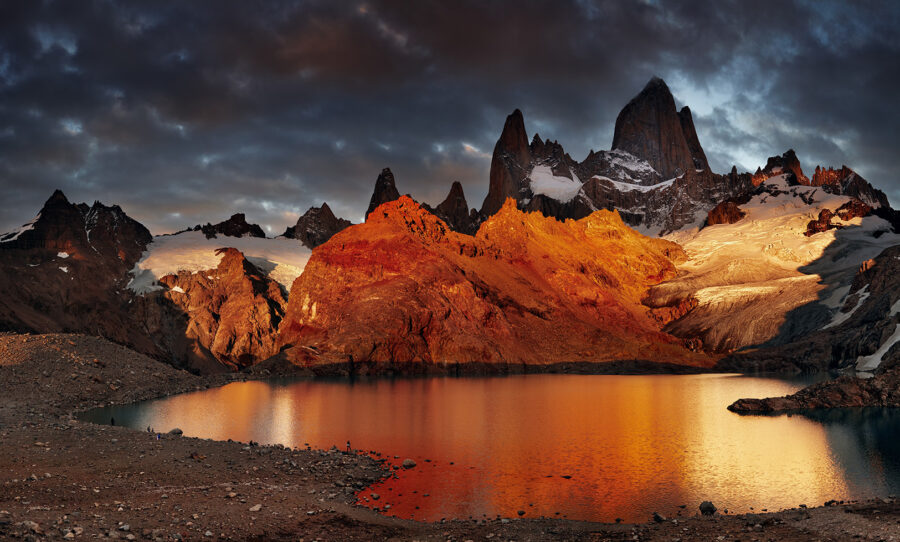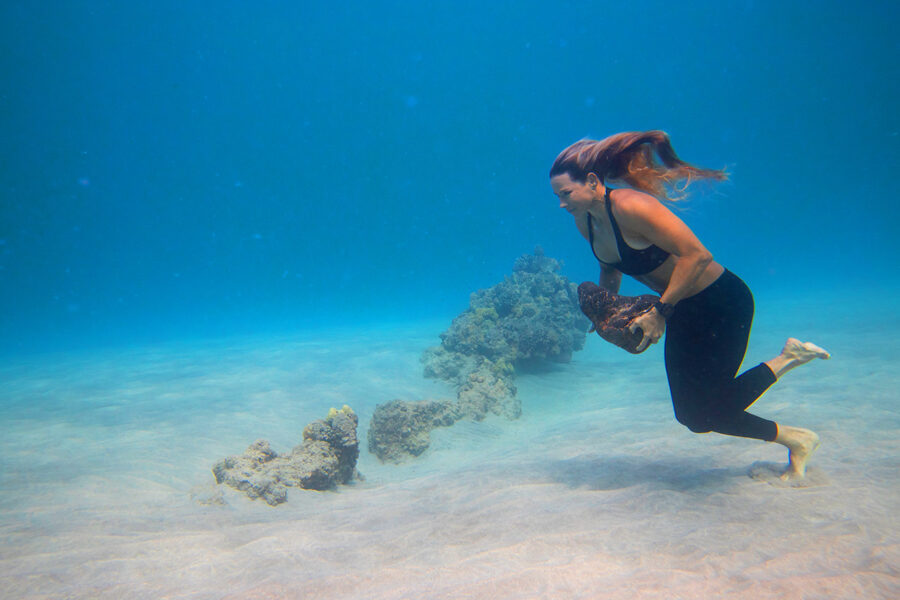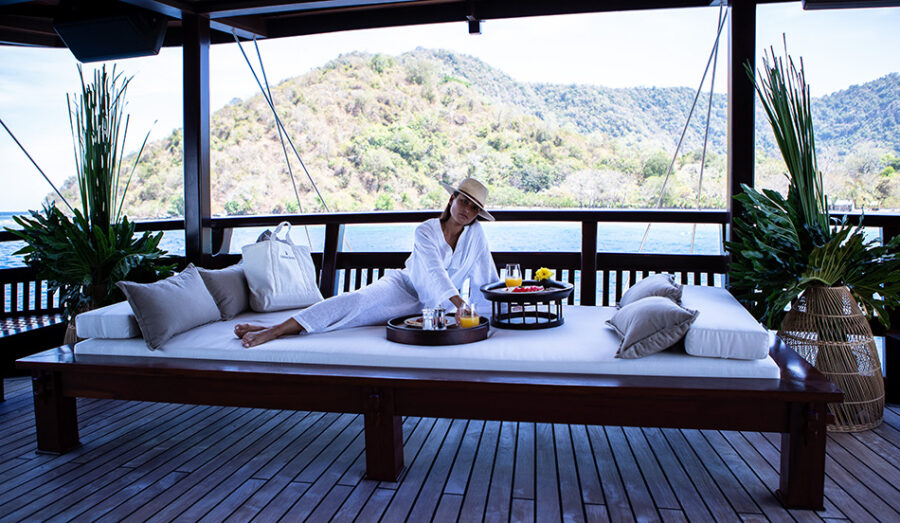
Trend #9
The Year of the Travel Reset
From manic getaways to slower, more mindful travel
By Elaine Glusac
Introduction
The coronavirus pandemic acted as a near-complete brake on travel in 2020. While some people eventually learned how to continue to take vacations safely while living with the pathogen, most stayed home.1 In the lull, travel operators fought—and are continuing to fight—for their livelihoods.
But the pause gave everyone—consumers and suppliers—the opportunity to think about rebooting travel for the better, correcting overtourism, becoming more conscious of where the money goes, how communities benefit or don’t, and how to use the power of tourism—which accounted for more than 10% of the world economy pre-pandemic2—to sustain cultures and environments and perhaps even leave them better off on the back end.
Ahead, the year 2021 may be the year that all travel becomes wellness travel. As home and work lives merged during the pandemic, work dominated—a working paper by the National Bureau of Economic Research found that the average workday grew 48.5 minutes during the pandemic in 16 large metropolitan areas in North America, Europe and the Middle East3—prompting employers to emphasize self-care, beginning with vacations, even if taken at home.4
Additionally, health assessments—including pre-arrival COVID-19 tests5—are becoming vital precursors to travel. Vaccine passports, recording virus tests and vaccinations, are already in development by industry groups and nonprofits.6
From the manic travel of 2019—which was the ninth year of record-setting growth in travel, outpacing global economic expansion, according to the World Travel & Tourism Council7—2021 will be the year of the travel reset, going slower, nearer and more mindfully.
 “If COVID has taught us anything, it is how fragile our ecosystem is and how many things we take for granted,” wrote Jack Ezon, the founder of Embark Beyond, a luxury travel agency based in New York City, in his annual forecast.8 The pandemic-related grounding of 2020 forced travelers to look to nearer horizons in their neighborhoods and nearby regions. “We discovered our own countries, our own homes, our own families, and our true values. People took inventory of their priorities and reassessed their lifestyles.”
“If COVID has taught us anything, it is how fragile our ecosystem is and how many things we take for granted,” wrote Jack Ezon, the founder of Embark Beyond, a luxury travel agency based in New York City, in his annual forecast.8 The pandemic-related grounding of 2020 forced travelers to look to nearer horizons in their neighborhoods and nearby regions. “We discovered our own countries, our own homes, our own families, and our true values. People took inventory of their priorities and reassessed their lifestyles.”
In many countries, the coronavirus vaccine rollout in December 2020 coincided with a spike in infections,9 turning travel optimism to travel tentativeness, in what many expect will be a continuing pattern in the fitful coming months.
From advancing sustainability to immersing deeply in nature, travel will reset this year in many ways, including the following.
Making travel regenerative
In the previous fallow year of travel, many in the industry talked about building back better. For some, that meant practicing more sustainability, or balancing the impacts on communities and the environment. For others, the picture expanded to regenerative travel, or leaving a place better than you found it.
Regenerative Travel, a global collection of more than 40 regenerative resorts in 24 countries devoted to “positive social and environmental impact,” recently rolled out a benchmarking system for hotels to scale their progress toward regeneration. “The key indicators we look for in all of our hotels include locally sourced food, resource management, environmental and social initiatives, immersive activities that open up the destination from a local’s perspective, and a ‘sense of place’ in its design that embodies the environment and destination it is located in,” said Amanda Ho, co-founder of the company.
Coming in 2022, north of the Arctic Circle in Norway, the over-fjord Svart lodge models regeneration with plans to be energy positive, producing more solar power than it needs to operate.10
Despite such promising projects, regenerative travel remains more goal than achievement presently, as travelers reckon with the carbon footprints created by travel even in reaching the most sustainable or regenerative destinations. But it has sparked more awareness in travelers to ask questions about sustainability.
“It really says to travelers, travel mindfully or consciously, look for companies that are sustainable and are going beyond to become regenerative,” said Anna Pollock, a researcher, travel consultant and founder of the website Conscious Travel. “On the business side, it’s how can we create a community of people engaged in an economic activity that delivers so much more than it takes out of the system.”
Both Ho and Pollock shared their unique perspectives on how tourism will be reset and future-proofed going forward in special one-on-one interviews with Cathy Chon, managing partner, CatchOn, FINN Partners, during the 2020 GWS.
Challenging overtourism
Pre-pandemic, destinations from Machu Picchu11 to Venice12 sought ways to curb excessive numbers of travelers in an overtourism blight that eroded the very places travelers clamored to see. In the travel pause, the industry saw the return of fish13 to the Venetian lagoon and vowed to fix the overtourism problem.
“My speculation is the world does not quickly snap back to the way it was,” Brian Cheskey, CEO and co-founder of Airbnb, told me in an interview last year, adding that the pandemic had “redistributed” travel from a handful of iconic bucket-list destinations to small communities and more remote destinations.
He and others have talked about combatting overtourism by focusing on quality over quantity, putting the emphasis less on growing tourism numbers than on attracting travelers more interested in a deeper connection, either by spending more time there or engaging visitors through programs that connect them to local residents.
In cruise ports like Barcelona, “There is anywhere from 7 to 10 times more spending by overnight travelers than individuals who come onshore for a couple of hours,” said Gregory Miller, the executive director for the Washington D.C.-based Center for Responsible Travel. “They were getting tremendous volume with little or inadequate return that doesn’t sustain infrastructure for tourists, let alone residents.”
There may be more limits on transient travel, as the city of Dubrovnik,14 Croatia has set for cruise ships, and possible day-use fees, as discussed in Venice. (Cruising itself is under a complete wellness overhaul; Norwegian Cruise Holdings, parent of Norwegian Cruise Lines and others, has committed to overhauling the heating, ventilation and air conditioning systems across its entire fleet of 28 ships with air purification systems.15)
Overtourism will be naturally quelled, for a time, by the economic downturn, giving destinations and tourism operators more time to work on new, more effective approaches to managing tourism.
“If the tourism industry decided to get more sustainable and invest more in the assets they trade upon, the positive influence would be so enormous and require so little of every individual who travels,” said Sven-Olof Lindblad, CEO of Lindblad Expeditions cruise line, adding that consumer demand will drive these corrections.
Correcting undertourism
In formerly popular places, no tourism often produced the kind of “undertourism” that starved communities of travel proceeds with cascading effects across social and environmental spheres. Poaching for bushmeat in Southern Africa, for example, returned as communities that once relied on tourism to fund their conservation efforts reverted to survival mode, extracting resources rather than protecting them.16
Correcting undertourism acknowledges the positive forces of travel to sustain people and places. Conscious travelers will be mindful of the power of their pocketbooks to support initiatives such as those at the new Xigera Safari Lodge17 in the Okavanga Delta of Botswana. In addition to using geothermal heating and cooling systems and running almost entirely on photovoltaic solar-hybrid power, the lodge commissioned more than 80 African designers and artists to produce more than 90% of its furniture and art.
Previous to the pandemic, undertourism meant going somewhere alternative to overtouristed places to ditch the crowds, a trend that has gained traction in the past year as travelers looked to escape to remote places, a shift likely to endure as travelers continue to value isolation. Amangiri, on 600 acres in remote southern Utah, recently opened its resort within a resort Camp Sarika with 10 canvas pavilions, each with their own pool and dining facilities, and saw a surge in requests for whole property buyouts by families and small groups.
Traveling tentatively
The new tentative tourism will move in tandem with public health recovery from local to regional to national to international in growing circumferences of comfort with health and safety protocols. International travel is likely to be pushed to late 2021 or beyond as recovering travelers stay close to home; in China, for example, nearly all of Marriott’s luxury properties were reopened at the end of 2020, with bookings up 50% last year at The St. Regis Sanya Yalong Bay Resort, indicating the strength of domestic demand.18
The US-based market research firm Destination Analysts has been surveying around 1,200 travelers weekly about their intentions and has found optimism about travel is tempered by hesitancy. In late November, “When asked to describe how they will approach travel post mass vaccine distribution, three-quarters still say they will be cautious,” said Erin Francis-Cummings, president and CEO of Destination Analysts.
Those who traveled during the pandemic tended to stay longer as their comfort levels grew.19 Resorts responded with on-property diversions, bringing the destination to the traveler, a trend that’s likely to continue with recovery.
“The hotel is actually becoming the destination,” said Chris Gabaldon,20 senior vice president of luxury brands at Marriott International, highlighting immersive experiences like moonlight camel rides in the nature reserve at the Ritz-Carlton Ras Al Khaimah21 near Dubai and visiting a private, by-appointment art gallery set up in The St. Regis Rome.22
Embracing nature
The healing power of nature, partially renewed by the mandate to maintain social distance, got a boost during the pandemic, as travelers flocked to the outdoors, from backyards to backwoods, throwing firewood on the blaze already ignited by forest-bathing and the movement by some medical doctors to prescribe time in the woods to patients seeking stress and anxiety relief.
Some of the most high-profile openings of 2021 offer cosseting entrée to the wild, including Explora El Chalten23 in Argentina’s Patagonia with treks, ice hikes and rock climbing in and around Los Glaciares National Park.
The back-to-nature movement coincides with booms in slow travel and human-powered travel.24 Slow travel—by foot, barge, RV or other decelerating means—offers more opportunities for reflection. At the Six Senses Punakha in Bhutan, guests are invited to hike through a forest to a nearby Buddhist monastery to meet with monks and learn about their daily life, followed by a meditation ritual back at the lodge. The active tour company Backroads developed a new set of trips called “Dolce Tempo”25 or “Sweet Time” that cover less ground but explore it more deeply in wine regions or national parks. The new seven-cabin wooden superyacht Dunia Baru,26 based in Indonesia, offers bespoke sailings around Indonesia, Thailand and Myanmar for private groups seeking the slow lane at sea to dive biodiverse reefs and beachcomb deserted white strands.
Human-powered means of travel, be it cycling, walking, skiing, climbing or kayaking, offers not just a wellness challenge but extra control over where, when, how long and in what company. Retail analysts NPD Group said that bike sales in 2020 in the US grew by more than two-thirds.27 Backcountry equipment for winter sports surged too, led by the sales of snowshoes, up 254%.28 In Taiwan, already celebrated for its extensive cycling routes, 2021 is the Year of Cycling,29 designed to showcase its natural assets from cliff-backed coasts to majestic mountains.
Putting purpose first
During the pandemic, many travelers accepted orders to stay at home by making plans to bust out when safe. In many cases, they reshuffled their bucket list, elevating near-future travel plans that would deliver more meaning or purpose, whether by reuniting with family, climbing Kilimanjaro, pursuing philanthropic travel, learning new skills, or chasing other goals.30
Before the pandemic, “There was always the ability to make travel happen,” said Misty Belles, managing director for global public relations for Virtuoso, the global network of luxury travel advisors.31 Now, she added, travelers are matching their passions to travel and pursuing heritage trips or personal goals, “with the mindset of, I may not have this chance again.”
Finding purpose in travel is a highly individual discovery, but the travel industry is offering creative ways to indulge it. At the new Mauna Lani,32 an Auberge Resort in Hawaii, guests seeking a fitness challenge can learn the Hawaiian training method of underwater rock running or a clinic in open-water swimming. OneSeed Expeditions invests 10% of its revenues in local entrepreneurs in countries where it operates.33 In 2024, designer Bill Bensley’s new development Worldwide China, which he nicknames “The Human Zoo,” is set to open. (He presented the concept to attendees at the 2019 GWS in an unforgettable keynote entitled “A Lifetime of Sensible Environmentalism.”) The development turns the concept of “zoo” on its head: Residents will remain in their hotel “cages” (the property includes seven hotels on 2,000 acres) or ride trains through the wildlife sanctuary to see animals that have been rescued from roadside zoos, roaming freely.
Tina Edmundson, the global brand and marketing officer for Marriott International, calls today’s breed of traveler a “Purposeful Luxurian,” defined as one “more proactive, progressive and looking to affect positive change, all while still delighting in the indulgence of global exploration.”34
Betting on a surge
The widespread distribution of a vaccine is expected to unleash a flood of demand for travel, though the date the dam breaks is the subject of widespread discussion, with consensus falling to late 2021 or early 2022.35 Certainly, the travel industry is eager to slake that pent-up demand through the development of on-site testing at airports delivering rapid results.36
The expected rush to travel is a potential threat to growing interest in sustainability, as “do-over” or “revenge travel”37 makes up for lost opportunities, no matter the cost. But the impact may be somewhat muted by workplace trends that allow employees to work from home, which could be anywhere, encouraging longer-term travel over short quick trips.38
Endnotes
1 https://www.ustravel.org/toolkit/covid-19-travel-industry-research
2 https://wttc.org/Research/Economic-Impact
3 https://www.nber.org/papers/w27612
4 https://www.shrm.org/resourcesandtools/hr-topics/employee-relations/pages/taking-care-of-your-employees-and-yourself-during-the-pandemic.aspx
5 https://www.nytimes.com/2020/10/21/travel/virus-tropics-reopening.html
6 https://www.cnn.com/2020/12/27/tech/coronavirus-vaccine-passport-apps/index.html
7 https://wttc.org/Research/Economic-Impact
8 Report: https://static1.squarespace.com/static/5cfe8ed66cbc6f0001321e1d/t/5fda71ff8708523ef2c50a01/1608151551666/Jack+Ezon+-+EMBARK+Beyond+-+Trends+Report+2021.pdf
9 https://www.usatoday.com/story/travel/2020/12/22/covid-travel-restrictions-set-tweaked-amid-new-virus-variants/4013489001/
10 https://www.svart.no/post@svart.no
11 https://www.cntraveler.com/story/we-are-not-trampling-machu-picchu-out-of-existence
12 https://www.aarp.org/travel/travel-tips/international/info-2019/venice-attractions-entry-fees.html
13 https://abcnews.go.com/International/venice-canals-clear-fish-coronavirus-halts-tourism-city/story?id=69662690
14 https://www.thedubrovniktimes.com/news/dubrovnik/item/5368-from-2019-a-maximum-of-two-cruise-ships-a-day-allowed-in-dubrovnik
15 http://www.nclhltdinvestor.com/index.php/news-releases/news-release-details/norwegian-cruise-line-holdings-announces-partnership-atmosair
16 https://www.nationalgeographic.com/animals/2020/07/covid19-behind-uganda-poaching/
17 https://xigera.com/sustainability
18 https://marrstar.ent.box.com/s/mslp530sv51yo2v8ec150feefy9ggu0i
19 https://www.nytimes.com/2020/11/04/travel/virus-vacation-trends-longer-weekends.html
20 https://marrstar.ent.box.com/s/mslp530sv51yo2v8ec150feefy9ggu0i
21 https://www.ritzcarlton.com/en/hotels/uae/al-hamra-beach
22 https://www.marriott.com/hotels/travel/romxr-the-st-regis-rome/
23 https://www.explora.com/hotels-and-travesias/el-chalten-patagonia-argentina-new/ PR is Andrea Schnoor Communications aschnoor@andreaschnoor.com
24 https://www.cntraveler.com/story/slow-travel-trend
25 https://www.backroads.com/tours/dolce-tempo-easygoing-vacations
26 https://www.duniabaru.com/
27 Bike sales from npd https://www.npd.com/wps/portal/npd/us/news/thought-leadership/2020/consumers-are-flocking-to-these-5-activities/
28 Backcountry sales: https://www.npd.com/wps/portal/npd/us/news/press-releases/2020/a-blizzard-for-early-season-backcountry-equipment-sales-as-consumers-set-their-sights-on-cold-weather-outdoor-activities–reports-npd/
29 https://www.taiwannews.com.tw/en/news/3777765#:~:text=Taiwan%20Tourism%20Bureau%20has%20designated,for%20promoting%20cycling%20in%20Taiwan
30 https://www.nytimes.com/2020/07/28/travel/future-travel-bucket-list-coronavirus.html
31 https://www.virtuoso.com/why-virtuoso/about-us
32 https://aubergeresorts.com/maunalani/experiences/intro-to-underwater-rock-running/
33 https://www.oneseedexpeditions.com/about
34 https://marrstar.ent.box.com/s/mslp530sv51yo2v8ec150feefy9ggu0i
35 https://www.nytimes.com/2020/12/22/travel/flight-cancellations-cruise-ships-covid-vaccine.html
36 https://www.afar.com/magazine/these-us-airports-to-have-covid-19-testing. https://www.nytimes.com/2020/10/07/travel/coronavirus-airport-testing-xpresspa.html
37 https://www.washingtonpost.com/travel/2020/07/29/revenge-travel-is-phenomenon-that-could-bring-back-tourism-with-bang/
38 https://www.nytimes.com/2020/08/19/travel/remote-worker-visa.html
Download this 2021 trend and receive the 2021 mid-year update as well. The 2022 Future of Wellness global trends report is now available. View the latest trends. Subscribe to our mailing list and receive the bi-weekly TRENDium, a compendium of the trends impacting the multi-trillion dollar global wellness economy featuring the latest news and insights. Sign-up to receive the TRENDium.


